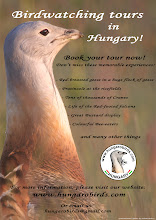
The a great bustard display draws to an end in Hungary, so in the last moment we went to take a few picture. Last friday we fixed an appointment with the national park's employees, that we are comming on sutarday. Dévaványa is a best place to observe this birds, so our destination was this town. In this region is a bigest polulation of the great bustard in Central Europe.



